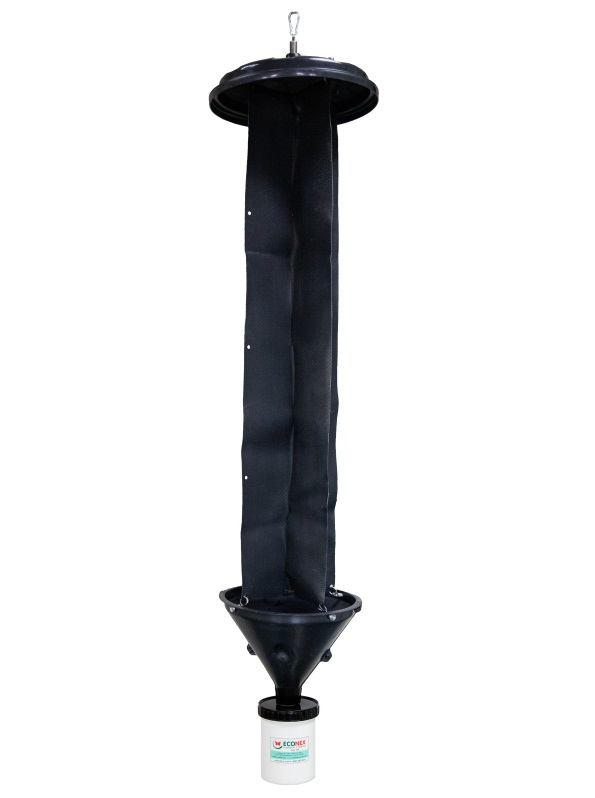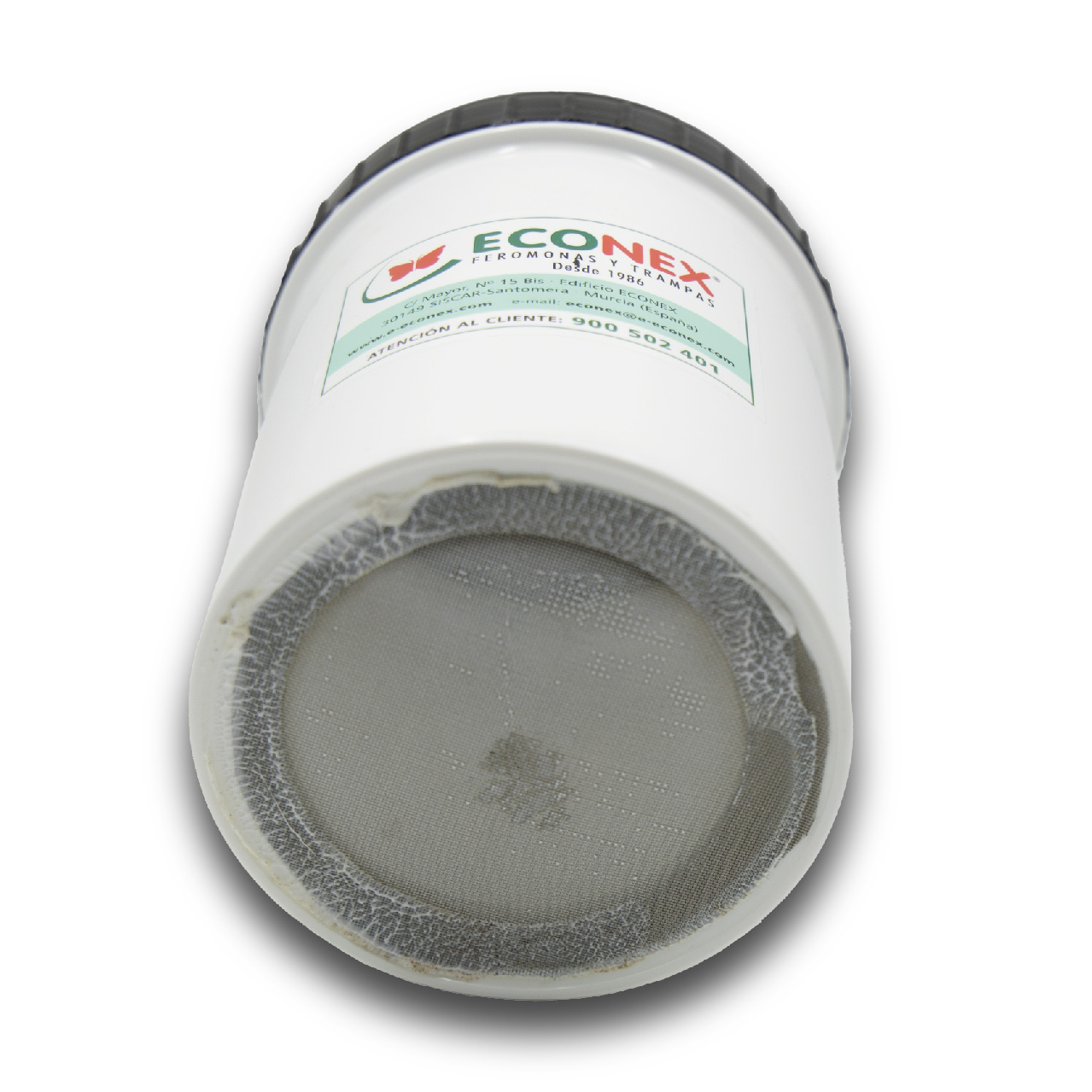Cerambycidae or longhorn beetles are from the Coleoptera family that have strictly phytophagous habits. Amongst them, the most important species feed on wood plant tissues.
Morphology and biology
The adults attack the bark and phloem of growing branches and the larvae have phloem-xylophagous habits. None of the species of the Monochamus genus reproduce on healthy trees, but they are attracted to stressed, dying or recently deceased trees. They are also attracted to freshly cut wood, favoured by previous attacks from Ipini bark beetles
(Orthotomicus e Ips). In fact, the kairomonal attractant used to attract the species, consists of kairomones that have been produced by the host and kairomones produced by the bark beetles that attack the tree, mainly ipsenol.
When Monochamus colonises these trees which already have a previously established population of bark beetles, it then acts as what is known as an expert predator or intraguild predator.
This means that the Monochamus larvae will feed on the phloem and other bark beetle larvae found inside the trees, regardless of them already living there. This extra protein intake is very likely to provide the Monochamus larvae with some sort of advantage over those that do not consume it (Mas, 2016).
The female lays her eggs in fissures with a characteristic cone shape or bite mark, excavated in the bark of suitable trees.

Male

Female
The larvae are apodous, more or less cylindrical, and have a thickening on the cephalic segments that partly hide the head. In the beginning, they feed on phloem and cambium. Later on, they enter inside the xylem and build a U-shaped gallery that ends in a pupal chamber, from which they emerge through a circular bore hole.
Once the young adult has emerged, it goes through a period of sexual maturity in which it feeds on the soft bark of small branches, brachyblasts, phloem and pines shoots.

M. galloprovicialis is therefore a non-aggressive insect. It is a very minor species that brings important benefits to the functioning of the forest ecosystem. It would not be of much interest if it were not for the fact that M. galloprovincialis had been identified as the vector of the Pine Wilt Disease, caused by the pine wood nematode (PWN)
Bursaphelenchus xylophilus in Portugal in 1999 (Sousa et al. 2001). Nowadays, it is the main vector of the disease on the Iberian Peninsula. Interaction between both organisms is a relationship of mutual interest, obligatory for the nematode and facultative for the beetle. This is because the nematode needs the beetle for its transport and dispersal.
The beetle benefits from the death of the forest caused by the nematode, because it means an increase in host material where to place its eggs.
Bursaphelenchus xylophilus eis a phytosanitary quarantine species introduced into Europe in 1999 when it was detected on the Setubal peninsula, in Portugal.
Since then, it has spread out so much, that practically the entire territory of mainland Portugal has been declared a demarcated area.
In Spain, four outbreaks have been detected since 2008, all close to the Portuguese border. Three of them in the province of Cáceres and the remaining one in Pontevedra. Three of the outbreaks are considered to be under control and the other completely eradicated.
The only vectors that have been shown to be effective in transmitting B. xylophilus, are species of the Monochamus, specifically seven species: M. carolinensis, M. mutator, M. scutellatus and M. titillator in North America; M. alternatus y M. saltuarius in Northeast Asia and M. galloprovincialis in Europe.
Therefore, one of the fundamental tools for controlling this disease is the control of its vector, as it is the only way to transmit the nematode from one tree to another.
























